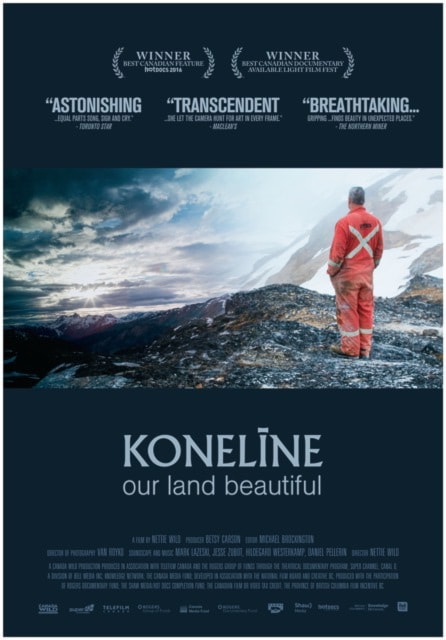The Kelowna Film Society saysit has a special and rare treat for Kelowna film audiences—a showing of KONELĪNE: our land beautiful, by Vancouver filmmaker Nettie Wild.
Winner of the Best Canadian Film award at the 2016 Hot Docs International Film Festival, KONELĪNE brings a sensual and timely cinematic message to Kelowna Jan. 25 at the Orchard Plaza 5 cinema.
Wild will be in attendance to answer audience questions at both the 4 p.m. and 7 p.m. screenings.
Filmed in the visually stunning northwest B.C. traditional territory of the Tahltan First Nation—sometimes called the Serengeti of the North—KONELĪNE paints an epic canvas of beauty and complexity as one of Canada’s vast wildernesses faces profound change.
Avoiding the ideological positions that have dominated the debate in recent years, Wild instead looks closely at a host of characters who are linked by their undeniable love for the region.
• A big game hunter and devoted environmentalist swims her horses across the unforgiving Stikine River.
• A Tahltan First Nation miner bores deep into the same territory than his elders are fighting to protect.
• A white hunter uses a bow and arrow while a Tahltan elder shoots moose from a pick-up truck with a high-powered rifle.
• A helicopter carries eight-ton transmission towers over pristine but dangerous mountains.
KONELĪNE seeks to showcase the poetry of every person’s views rather than just their position on the ideological argument.
During filming, as word spread of the power of cameraman Van Royko’s work (subsequent winner of the Canadian Society of Cinematographers 2016 Award for Best Documentary Cinematography), many who had been leery of Wild’s camera were ready to take a place in front of the lens.
Shot over four seasons, KONELĪNE captures the spirit of a very big country, with the land itself becoming the central character in what is described as a "cinematic poem" dedicated to the extraordinary women and men of the BC northwest and the conflicts facing them today.
